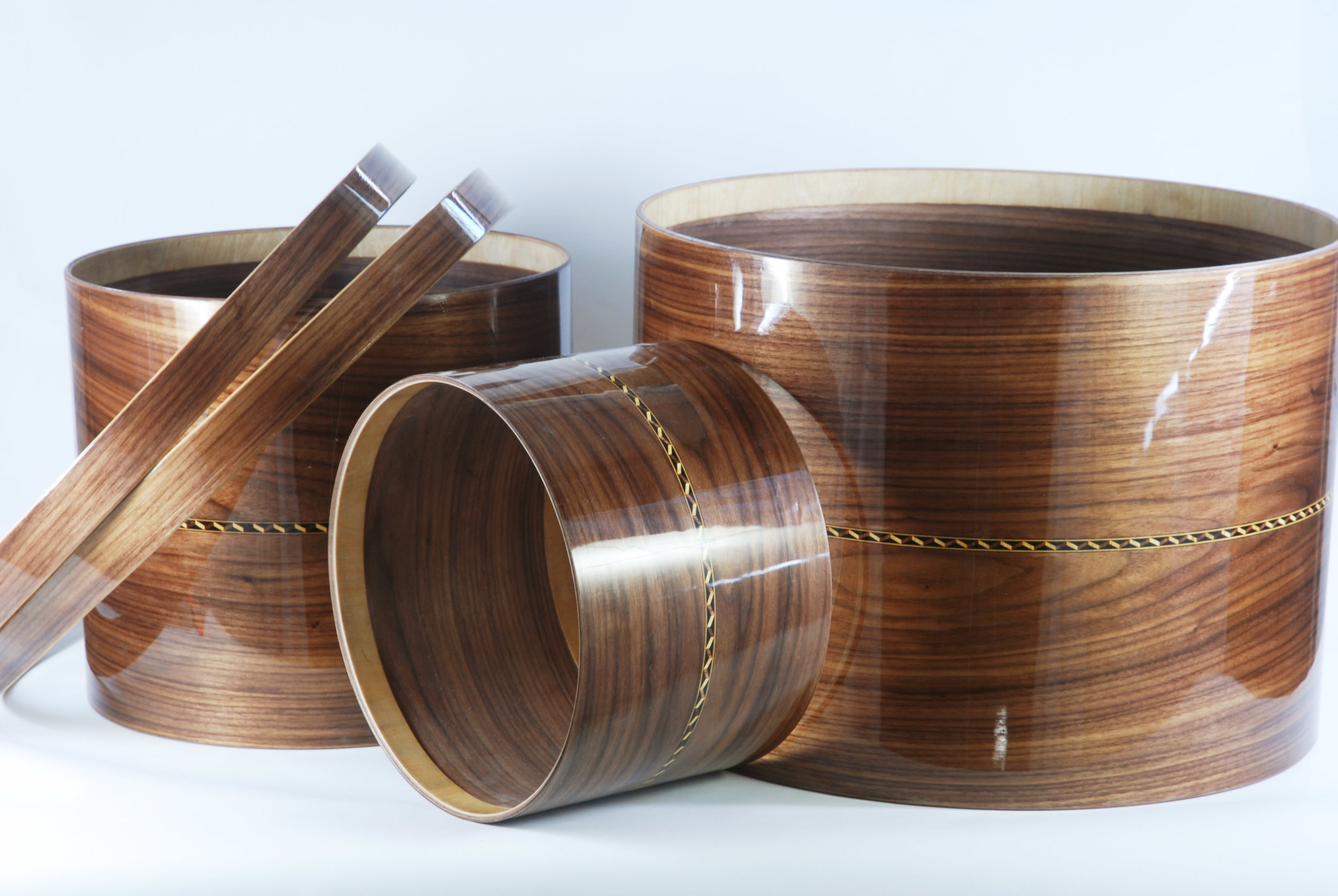(Note: This is the third in a series of three articles about the process of custom drum ownership. The series examines the decision-making processes related to choosing custom, selecting a source, and developing a design plan. )
All right, you’ve mulled the pros and cons and decided that custom drums are right for you, and you’ve done your due diligence and chosen a builder to work with. Now comes the fun part: deciding on what you want. In the world of custom drums, there are lots of choices to make and options to consider. There may be possibilities you hadn’t thought of, and there could also be some compromises or trade-offs involved in the final design.
The important thing is that the various aspects of design work together toward the same sonic, visual, or structural goal. So there are more questions you’ll need to answer for yourself before you’re ready to choose the design elements, and these are not the same as the questions about why you should get custom drums. Work with your builder on these items, because he can be your best guide through the list of decisions. He may ask you some leading questions to give you some direction in your thinking, but if he doesn’t, try some of these:
How are you going to use these drums?
Begin this one by thinking about whether you’re going to be playing primarily live acoustic, live amplified, or in the studio. Maybe it’s a combination of these, but you should have an idea of primary uses and priorities. Some uses call for more emphasis on tone, others require more projection, and where that balance falls will have a lot of influence on your design.
If you’re going to be playing live, what sort of wear and tear do you expect? Touring or small bars can be hazardous to a delicate finish, so you might find wraps to be the most practical approach. Gentle handling and minimal hauling mean great opportunities for natural, stained or painted finishes. Even some softer metals like gold plating or uncoated polished brass can get scratched easily.
Next, is weight an issue? Sizes, materials, shell thicknesses, and hardware choices can make tremendous differences in how easy it is to transport your drums, as well as in what sort of mounting and support systems might be needed to hold them securely during use.
What do you look for visually?
Start this answer by another look at likely venues. Will the audience be up close at a small club or farther from the stage at a larger one – or even hundreds of feet distant at an arena? Beautiful wood grain and fine details can get hard to see as distance from them increases, while very bold designs may be too strong up close even though they look fine from far away.
Some custom builders can provide special effects like internal lighting, sparkle fades, chameleon paints, etc., that can be dramatic in some venues or lighting situations but relatively bland in others.
The same questions come up for hardware in terms of size, shape, and color. What you see when you’re sitting at the kit and what someone else can see from some distance may be radically different. From the audience’s viewpoint, is the look of the hardware going to dominate over the finish, or vice-versa?
What sound characteristics do you like?
Sizes, thicknesses, materials, hoops, and edges all have significant effect on a drum’s acoustic character. Do you want drums that are really loud, or drums that are really resonant? Do you want power or response? Are you playing music styles where cutting through the mix is a major issue, or styles where tone and pitch are especially important? Do you need responsiveness for quiet playing, or big projection and power? How do you like to tune the drums in a kit? What sort of versatility do you really need vs. what’s best for your primary usage, and which is more important?
These are all very specific questions about the way you, specifically, play music – and that’s the whole point of going custom.
Where’s your financial comfort zone?
We’ve looked earlier at the reasons custom drums tend to be more costly than production drums, so you’re already prepared for a little sticker shock. But the bigger question is, what does it make sense for you to spend? It’s worth paying for some of the features mentioned above that advance your sound and performance appeal. But it’s not a good use of money to spend on things that don’t really make that much difference. Try to avoid buying something just because it’s there, but do invest in design that will make you sound better, play better, or enhance audience attention. And while you think about this, think about things that make you feel good about the drums you’re buying – which is also a factor in your long-term satisfaction with them.
Now talk with your builder.
Together, you can go over all those details of the end result you want, and your builder can make meaningful design recommendations that will contribute toward reaching your goals. Remember, custom drums are an opportunity to get exactly what you want, but without good pre-planning that result isn’t something you can take for granted.
Jeff Hankin is the owner of Carolina Drumworks. Jeff is also a columnist and contributor to Not So Modern Drummer. You can visit his site at www.carolinadrumworks.com






